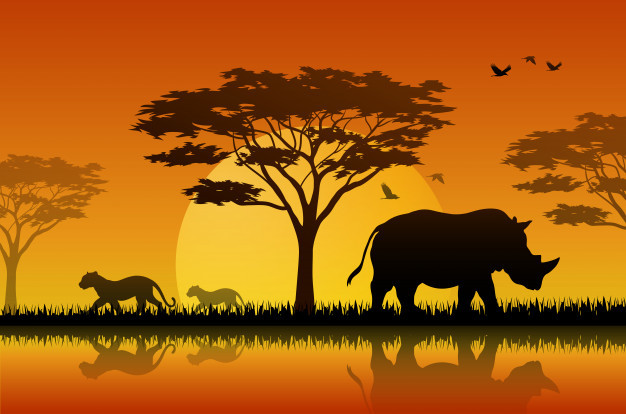 |
Vietnam has been criticized for being one of the most integral hubs for the global trade in illicit wildlife and the country has made efforts to combat wildlife trafficking over the past years.
And the way Vietnam changes this bad fame is encouraging.
A wildlife trade hub
May Rice, executive director of the London-based Environmental Investigation Agency (EIA), said that Vietnam has made repeated promises under the Convention on Illegal Trade in Endangered Species to tackle ivory and rhino horn trafficking, but it has been a primary and fast-growing hub for ivory trafficking and the illegal wildlife trade.
Instead, the past decade has seen Vietnam serve as a prominent transit route for large ivory shipments to China as well as overseeing a growing carving industry and one of the world’s biggest markets for ivory sales, she said on the agency’s website.
The EIA’s database of ivory seizures reveals that since 2009, 56 tons of ivory have been seized in Vietnam and another 20 tons linked to Vietnam in other countries. These amounts alone represent as many as 11,414 dead elephants, according to the agency.
In addition, investigations by Vietnamese police revealed several major criminal syndicates operating in Mozambique and other African countries which traffic wildlife into and through Vietnam.
According to the EIA, the Vietnamese gangs are prepared to be more hands-on, sending out agents to other countries to personally supervise the packing and dispatch of contraband and using a variety of sophisticated concealment methods such as hiding tusks in hollowed-out logs, blocks of fake stone or innocuous goods such as beans.
Seriously, Vietnam has turned to be a consumer of wildlife from a site for wildlife transshipment, according to PanNature, a Vietnamese not-for-profit organization dedicated to conserving biodiversity.
It has blamed that wildlife demand from Vietnamese is increasingly high, depleting domestic biodiversity resources, and having a negative impact on natural resources in other countries, from the sub-Mekong Region to Africa.
Accordingly, the number of species listed as Endangered (EN) in IUCN’s Red Book rose to 418 in 2007 from 407 species in 2004 and 365 in 1992, VietNamNet has reported.
According to scientists, the last one-horn rhino in Vietnam was killed at the Cat Tien National Park in 2010 while Bos sauveli and Batagur turtle are believed to be extinct.
Why wildlife consumption?
Much of the demand for illegal wildlife products is in Asia, especially in China and Vietnam.
That’s predominantly because wealth in those places has been increasing over the past decades, so people who previously could not afford things like ivory jewelry or rhino horn carvings now can do so, freelance science journalist Rachel Nuwer said in an interview with the National Geographic.
The most obviously affected animals are the big, charismatic megafauna like rhinos, elephants, tigers, and even bears. There’s more demand than there is supply, she said.
People consume wildlife products for jewelry, pets, traditional medicines, trophies, or wild meat, which some cultures consider a luxury item. That’s misconception.
Another reason is that much of this illegal trade is made up of disorganized, opportunistic criminals so it’s hard for authorities and police to chase the trafficking.
Significant progress with international support
Being a hotspot for wildlife trafficking and consumption since the late 80s, Vietnam has struggled to combat wildlife crime thanks to significant support from different international organizations.
The United States Agency for International Development (USAID) has extended its support to the fights against wildlife trading. Its latest move was the launch of a US$10-million project in cooperation with the Vietnamese Ministry of Agriculture and Rural Development (MARD) in May 2018.
The project aims to support Vietnam in improving the legal framework, strengthening and improving law enforcement and prosecution of wildlife crime and reducing consumer demand for illegal wildlife products in the country.
The United Nations Office on Drugs and Crime (UNODC) in consultation with the partners of the International Consortium on Combating Wildlife Crime (ICCWC), including CITES Secretariat, INTERPOL, World Bank, and World Customs Organization in 2015 made a report named the Wildlife and Forest Crime Analytic Toolkit which is the result of an analysis. It was a government-led process, carried out with the participation of relevant stakeholder agencies across the country.
Meanwhile, the UK Embassy, a key diplomatic partner in the effort to combat wildlife crime, hosted the “Inspire Me Festival” in Hanoi in November 2018 helped raise people’s awareness of protecting wild animals.
Many non-governmental organizations namely TRAFFIC – a leading non-governmental organization working globally on trade in wild animals and plants, and the Management Authority of CITES (the Convention on International Trade in Endangered Species of Wild Fauna and Flora) have given great support to help Vietnam make progress in fights against wildlife trafficking.
As a result, Vietnam is one of the countries committed to fighting against illegal wildlife trade. Wildlife protection becomes stronger under regulations outlined in the amended Penal Code. As per Vietnamese legislation, hunting, catching, killing, rearing, caging, transporting and trading wild animals is a crime. Hanoitimes
 It takes Vietnam both money and time to get rid of the bad status of a wildlife trafficking hub.
It takes Vietnam both money and time to get rid of the bad status of a wildlife trafficking hub.